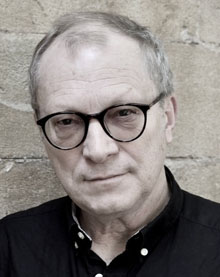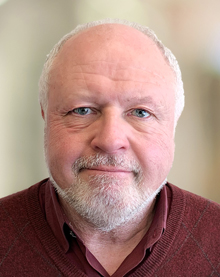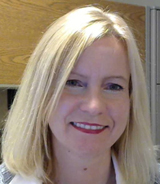Printed in the Winter 2023 issue of Quest magazine.
Citation: Lachman, Gary, "Abraham Maslow: Getting Back to Human Nature" Quest 111:1, pg 36-40
By Gary Lachman
 Sometime in the 1940s, the behavioral psychologist Abraham Maslow had what then seemed a radically new idea. He decided to study healthy people rather than sick ones. Maslow had trained in the Freudian tradition, as most American psychologists had, and he had cut his experimental teeth following the laboratory rigors of behaviorism, the then-dominant school of psychology.
Sometime in the 1940s, the behavioral psychologist Abraham Maslow had what then seemed a radically new idea. He decided to study healthy people rather than sick ones. Maslow had trained in the Freudian tradition, as most American psychologists had, and he had cut his experimental teeth following the laboratory rigors of behaviorism, the then-dominant school of psychology.
Freud’s ideas about the Oedipal complex, repression, defense mechanisms, the death wish, and the other notions making up the formidable array of psychoanalytic tools portrayed the modern psyche as invariably neurotic. Freud had argued this point cogently in his late work, Civilization and Its Discontents (1930), in which he says that because the demands of civilization necessarily lead to the inhibition of our basic drives (for Freud, this meant sex), we all suffer from unavoidable frustration. In order to enjoy the benefits of civilized life and the security it brings, we must delay the gratification of our desires or even go without it at times. This inevitably leads to a conflict between the id—Freud’s term for the unconscious—and the superego, the inner disciplinarian who chastises us for having such beastly appetites in the first place. We will never be free of this psychological friction, Freud believed, but we could become “better adjusted” to the demands society makes on us. Such a “well-adjusted” individual became the goal of psychoanalysis.
J.B. Watson’s behaviorism did not deal with the unconscious; in fact, it jettisoned the idea of any inner world entirely and focused on what factors influenced human behavior, which, after all, is all that we can observe. Watson was a proponent of the “blank slate” or tabula rasa school of psychology, which has its roots in the philosophy of John Locke. In An Essay Concerning Human Understanding (1689), Locke argued that there was nothing in the mind that didn’t get there by way of the senses. Contrary to Plato, Descartes, and, later, Kant and psychologists like C.G. Jung, who in different ways argued that we do not come into the world completely unfurnished, Locke contended that there was nothing innate in the mind; it was at birth empty. (This, by the way, is behind Locke’s notion that “all men are created equal”: we all start equally blank.)
Watson took this insight and ran with it, famously declaring that given enough time and the proper environment in which to work on them—a key ingredient in behaviorism—he could, on demand, transform any child into a doctor, lawyer, artist, merchant, or anything else.
Although Watson’s optimism is not as evident among behaviorists today, the idea that the environment—nurture—is all-important remains, while any notion of an intrinsic human nature is strictly verboten. The human psyche is infinitely plastic, completely malleable. In order to create a just society, we should, as B.F. Skinner, a later behaviorist, declared, abandon any notions of freedom and dignity and submit to the conditioning needed to bring such a society about.
Yet when Maslow turned his attention to studying “the best specimens of mankind I could find”—among them his colleagues the anthropologist Ruth Benedict and Max Wertheimer, one of the founders of Gestalt psychology—he discovered that both Freud and Watson were wrong. People in the modern world were not invariably neurotic; indeed there were quite a few for whom being “well-adjusted” meant nothing—would, in fact, mean an actual lowering of their psychological stature in order to fit in. And contrary to the still reigning dogma that nurture, or culture, always and everywhere trumps nature, there was a recognizable transcultural human nature, and it had little to do with the pessimistic conclusions of Freud.
Maslow found that we seem to have a natural, that is instinctual, appetite for the higher values that both Freud and behaviorism sought to reduce to something lower. We were not stimulus-response machines, driven solely by antecedent forces, nor were idealism, altruism, spirituality, and mystical experiences simply the product of sublimated lower drives. They were a real part of human psychology and human biology and were just as innate as hunger, thirst, and the need to breathe. This was radical indeed.
As his biographer and friend Colin Wilson pointed out, Maslow was at best a “reluctant rebel,” who, initially at least, saw his work as adding to and expanding the field of behavioral science, not undermining it. Throughout his career he retained a respect for Freud and for the rigor of the behaviorists, even when it was quite evident that both had, in his words, sold human nature short.
By now, Maslow’s ideas about “self-actualization,” the “hierarchy of needs,” and “peak experiences” are part of the schools of humanistic and transpersonal psychology that he helped found in the 1950s and ’60s, and have even entered into the general language. Yet Maslow never felt truly at home within what was becoming known as the “alternative society.” After an unpleasant experience at the hands (literally) of the touchy-feely Gestalt psychologist Fritz Perls, Maslow chided Michael Murphy and others at California’s Esalen Institute—where the unpleasantness took place—for their anti-intellectualism and penchant for ersatz spontaneity, their preference for the sensuous hot tub over the cerebral think tank.
Maslow’s road to becoming an “uneasy hero of the counterculture,” as another biographer, Edward Hoffman, called him, was anything but straightforward and obvious. There were no dramatic episodes, like the oft-told story of Jung’s break with Freud, or sudden overnight successes. Maslow steadily worked his way against the current of mainstream academic psychology, slogging through often boring teaching and research positions at a number of institutions for decades. His last year (he died of a heart attack in 1970) was spent outside the academy, as a consultant for the Saga Food Corporation, who saw in his ideas about the possibility of a creative relationship between employer and employee an answer to the problems of productivity and motivation. (Unlike his friend the Freudian Marxist Erich Fromm, Maslow believed such a rapprochement was highly possible.) Motivation—what encourages someone to put their best into their work, whatever it may be—was a subject that remained at the heart of Maslow’s own.
Abraham Maslow was born on April 1, 1908, the first of seven children of a Russian-Jewish immigrant from Kyiv. His father was a cooper, a barrel maker, and his life exemplifies the American success story familiar to earlier generations. Through hard work, thrift, and determination, Samuel Maslow lifted himself and his family out of a slum district in Brooklyn and into increasingly well-off middle-class neighbourhoods. Yet the pressure to succeed meant Maslow saw little of his father.
This was not the case with his mother, with whom Maslow had at best a disastrous relationship. He called her a “horrible creature” and throughout his life had little good to say about her. Once he left home, they saw little of each other, and he did not attend her funeral. Her superstitious character put him off religion for life; although in later years he came to understand its positive side, throughout most of his life Maslow was a secular atheist.
More earthly reasons were also key to this dysfunctional relationship. Stinginess led his mother to lock the refrigerator door so that Maslow often had to beg her for food. When she noticed Maslow’s growing love of music, she smashed a collection of 78 LPs he had bought. When Maslow found an abandoned kitten and brought it back home, his mother told him to get rid of it. When he didn’t, she killed it in front of him. No doubt this incident prevented Maslow from performing a similar act: he was unable to meet the challenge of killing a cat required to join a local gang. Maslow’s fondness for animals extended to the monkeys he would later study, many of whom he found more congenial company than his colleagues.
Maslow wondered why, with such a schizophrenogenic mother (one who drives her children crazy), he didn’t turn out worse than he did. He attributed his comparative sanity to the care and attention he received from an uncle, the first of several father figures he would later encounter in academia.
Along with an unloving mother, Maslow also had to contend with the anti-Semitism that was endemic to society. He dealt with anti-Jewish sentiment throughout most of his career, even in the hallowed halls of academe, if not especially there. Never a religious observer, Maslow nevertheless later came to believe that the high moral and ethical code, hunger for a just society, strong community sense, and altruistic aims of the Jewish faith expressed the idealism and world-bettering instinct he found in the people he came to call “self-actualizers”: individuals who strive to realize their highest ideals and potentials.
Yet this hunger and thirst for righteousness came at a price. The late cultural mandarin George Steiner, himself a Jew, once remarked that Jews have been disliked because they set too high a moral standard, one most people cannot meet. In his last days Maslow came to feel that his self-actualizers were often subject to a similar resentment from those quite happy to meet the minimum requirements for being human, but not more. Later he would christen this avoidance of the demands of what is best in us the “Jonah complex,” after the biblical character who runs away from his higher calling. If you deliberately did this, he warned, you will be “deeply unhappy for the rest of your life.” Why? Because “you will be evading your own capacities, your own possibilities.”
Maslow’s own life, from his early start at Brooklyn College to his last years at Brandeis University, are testament to the effort, courage, and determination living up to our higher potentials often entails.
When Maslow turned his attention to studying healthy people—a career decision his colleagues at Columbia University thought aberrant—he had already come to the belief that “human nature is not infinitely malleable.” Working with the great American psychologist E.L. Thorndike, Maslow decided that it was pointless trying to separate the hereditary from the environmental in the psyche, as Thorndike hoped to: the two were impossible to pry apart. Maslow did see, though, that as humans, we have a nature that resists influence from outside and that attempts to impose arbitrary conditioning on our fundamental being did damage to ourselves.
Much as Jung would speak of the archetypes, Maslow saw that we come into the world with a set of needs already in place, the satisfaction of which proceeds in a kind of sequential order and constitutes psychological, and often physical, health. The environment we find ourselves in may, of course, frustrate the gratification of these needs; hence Maslow’s interest in creating communities dedicated to fulfilling these inherent needs and nurturing our potential (an expression of his constitutional utopianism). Nonetheless, these needs are there, and Maslow observed that his self-actualizers often had to struggle against difficult conditions, as he had, in order to actualize themselves.
Maslow conceptualized this picture of an inherent human nature in what he called “the hierarchy of needs.” At the base is our fundamental need for food. A starving person can think of little else, but once he or she can get their three squares a day, the need for a home, for some fixed shelter, starts to take precedence. As Colin Wilson remarked writing about Maslow, every hobo dreams of a little cottage with roses round the border.
Once we secure a home—even if it is only a room—the need for love and relationship takes over. After this comes the last of what Maslow calls “deficiency needs”: needs for things we lack. This is the self-esteem need, the desire for the good opinion of others. The phenomenon of social media seems to me evidence that, in the developed world at least, society as a whole has attained this level on Maslow’s hierarchy, with our competition for likes and desire to be noticed, to be influencers. The rise in teenage suicides linked to low self-esteem through online abuse seems to corroborate this idea.
Yet Maslow recognized that there is a fifth level to his hierarchy, one that relates to what he called “creative” or “meta” or “being needs.” These do not concern lacks but are focused on our need to use our powers, talents, and abilities. Maslow discovered that the failure to do this can have harmful effects. A woman who came to see him for counseling told him her life had lost all meaning. She suffered from insomnia, loss of appetite, and boredom, and had even stopped menstruating. She had been a brilliant psychology student and had planned to go on to graduate school. Her plans changed when she was offered a well-paying position as a supervisor at a chewing gum factory. It was the Depression, and she was supporting her unemployed extended family. The work was welcome but dull, and she felt she was wasting her life. Maslow advised her to take classes at night school. This did the trick; once she started using her intelligence, her depression lifted and even her physical symptoms disappeared. For Maslow, “any talent, any capacity was also a motivation, a need, an impulse.” Failure to meet such needs can stop us in our tracks.
Maslow may not have known this, but he had hit upon an insight conveyed in the Gnostic Gospel of Thomas, which tells us that “if you bring forth what is within you, what you bring forth will save you. If you do not bring forth what is within you, what you do not bring forth will destroy you.” Maslow knew this instinctively. Instead of looking at childhood trauma or telling the woman how lucky she was to have the job, he saw that she was being prevented from bringing forth what was within her, that is, her intelligence and creativity. Once she was able to do this, her life had meaning again.
Our metaneeds are all part of the one central need we all possess: the need to self-actualize. This is similar to what Jung calls individuation, our inbuilt urge to become who we are, to be wholly and truly ourselves. While Jung saw this as a process of psychic integration, bringing the conscious and unconscious minds together in a fruitful, creative union, Maslow approached it in a more extraverted way, through the active use of our inborn abilities rather than through an exploration of dreams and other expressions of the unconscious.
Both Maslow and Jung saw creative work as a means of achieving actualization, although for Maslow it was the work itself, and not necessarily what message it might convey, that was essential. And by creative work, we needn’t mean only great works of art: we are not all Beethovens. Such creativity could be expressed in more humble ways, the essential ingredient being a need to do something well, for its own sake, not for some utilitarian purpose.
Maslow also came to see that people who did pursue these metaneeds were subject to sudden moments of happiness and joy that he called “peak experiences.” These moments of unsolicited bliss were not sought out, as some have suggested: the evidence for peak experiences did not come from thrill seekers skydiving or climbing Everest (although, to be sure, such pursuits may prompt a peak). They came from everyday activities and a sudden realization of what we can call reality.
Maslow told the story of a Marine who had not seen a woman for two years. When stationed back at camp, he saw a nurse and was struck dumb by the difference between men and women, something he knew but had forgotten. Maslow also gives the example of a mother getting her children and husband off to school and work, suddenly realizing how much she loved them and how lucky she was.
Other examples suggest the same insight: peaks do not reveal some strange, mystical otherworld, but are moments when we see reality freshly, as if for the first time. At these moments, what Colin Wilson calls our “indifference threshold” is temporarily lowered, and we realize the value of what we have taken for granted. The content of a peak experience is the same as the content of a nonpeak experience. The difference is that in a peak, we are really seeing what is there all the time. Paraphrasing the poet and Blake scholar Kathleen Raine, we can say that in peaks, we do not see different things, but see things differently.
Maslow believed that peaks could not be produced at will, a remark that his critics, like James Hillman, who believe his work is at heart hedonistic and ignorant of life’s “vales,” should reflect on. Peaks come and go when they please, although we can work to create the conditions for their appearance.
Maslow told Wilson that once he got his students thinking and talking about peaks, they began to have them more frequently. To Wilson, this suggested that simply remembering peaks and grasping their reality could bring them on. We can say these people brought on peaks by using their imagination.
Maslow later came to speak of what he called “plateau experiences,” moments of insight and clarity that, although not as ecstatic and emotional as peaks, nevertheless reveal the world to be a much more fascinating and meaningful place than we often believe it to be. Such plateaus could be brought on by meditation, listening to music, making love, or simply looking at a flower, if we perform these activities with our full selves instead of rushing through them in our usual hurried way.
Maslow was always a controversial thinker, although a certain reluctance and professional prudence led to some of his most controversial ideas remaining unpublished. He was not keen on the student radicals of the 1960s, detested the takeover of Cornell University when he was there, and had little good to say about the rising hippie culture. Like Joseph Campbell, he did not condemn American involvement in Vietnam. He was part of the so-called Greatest Generation and believed in the merits of hard work and integrity.
Towards the end of his life, Maslow was troubled by the reflection that although they are capable of it, not everyone reaches the self-actualization level. He began to explore the reasons for this and reached conclusions that our egalitarian-minded time may find objectionable. Because our needs are ultimately biological, some people may simply be more prone to actualization than others because it is in their biology to be so, just as some people are taller, faster, or stronger than others.
In his last, unpublished papers, Maslow began to speak of the possibility of a “biological elite”: individuals who pass beyond the self-esteem level on the hierarchy of needs because their nature compels them to. He began to wonder if these actualizers would face some resentment from the majority of nonpeakers, and wondered what sort of social and economic trade-offs could be arranged so that the different types could live together amicably.
Maslow died before he could confirm his late thoughts. Whether self-actualizers face or will face some kind of pressure from the nonactualized majority remains to be seen. Anyone interested in what self-actualizing may mean for them can discover this in Maslow’s writings. Today we hear a great deal about the importance of getting back to nature. It can do us no harm to follow Maslow’s lead and get back to human nature too.
Sources
Hoffmann, Edward. The Right to Be Human: A Biography of Abraham Maslow. Los Angeles: Jeremy P. Tarcher, 1988.
Maslow, Abraham. The Farther Reaches of Human Nature. New York: Penguin, 1976.
———. Future Visions: The Unpublished Papers of Abraham Maslow. Edited by Edward Hoffman. Thousand Oaks, Calif.: Sage Publications, 1996.
———. Religions, Values, and Peak Experiences. New York: Viking, 1970.
———. Toward a Psychology of Being. New York: Van Nostrand Reinhold, 1968.
Wilson, Colin. New Pathways in Psychology: Maslow and the Post-Freudian Revolution. New York: Taplinger, 1972.
Gary Lachman is the author of many books about consciousness, culture, and the Western esoteric tradition, including Dreaming Ahead of Time; The Return of Holy Russia; Dark Star Rising: Magick and Power in the Age of Trump; Lost Knowledge of the Imagination; and Beyond the Robot: The Life and Work of Colin Wilson. He has written biographies of C.G. Jung, H.P. Blavatsky, Rudolf Steiner, Emanuel Swedenborg, P.D. Ouspensky, and Aleister Crowley. He lectures around the world, and his work has been translated into more than a dozen languages. He was a founding member of the pop group Blondie and in 2006 was inducted into the Rock and Roll Hall of Fame. He has contributed articles to Quest for over twenty-five years. He can be reached at www.garylachman.co.uk, www.facebook.com/GVLachman/ and twitter.com/GaryLachman.
 Spooky action at a distance. Three times.
Spooky action at a distance. Three times.

 Behind the glare of my computer screen lay a womblike and mysterious space impregnated with Persian rugs, pink lilies, and plump billows of incense smoke. A commandingly calm voice oozed through the speakers with a sentence that immediately made me sit up a little straighter: “The energy of God in the body is the spine; it’s a very exquisite thing.”
Behind the glare of my computer screen lay a womblike and mysterious space impregnated with Persian rugs, pink lilies, and plump billows of incense smoke. A commandingly calm voice oozed through the speakers with a sentence that immediately made me sit up a little straighter: “The energy of God in the body is the spine; it’s a very exquisite thing.” The Theosophical Society (TS) is based on the principle of freedom of thought. In 1924, the General Council (the international governing body of the organization) wrote the following:
The Theosophical Society (TS) is based on the principle of freedom of thought. In 1924, the General Council (the international governing body of the organization) wrote the following: Many years ago, personal tragedy landed me on the therapist’s couch. My brother had passed away from a brain tumor, and I was struggling to cope. During one particularly intense therapy session, something unexpected happened. A large black bird launched itself from a strand of trees in the distance, soared across the parking lot, and alighted on the ledge outside the window. Fixing me in its gaze, it started to peck at the glass. And then kept pecking—for an uncomfortable length of time. We gaped, my therapist and I. “How remarkable,” she said, more than a little unnerved. “What do you think your Theosophists would say about that!?”
Many years ago, personal tragedy landed me on the therapist’s couch. My brother had passed away from a brain tumor, and I was struggling to cope. During one particularly intense therapy session, something unexpected happened. A large black bird launched itself from a strand of trees in the distance, soared across the parking lot, and alighted on the ledge outside the window. Fixing me in its gaze, it started to peck at the glass. And then kept pecking—for an uncomfortable length of time. We gaped, my therapist and I. “How remarkable,” she said, more than a little unnerved. “What do you think your Theosophists would say about that!?” Sometime in the 1940s, the behavioral psychologist Abraham Maslow had what then seemed a radically new idea. He decided to study healthy people rather than sick ones. Maslow had trained in the Freudian tradition, as most American psychologists had, and he had cut his experimental teeth following the laboratory rigors of behaviorism, the then-dominant school of psychology.
Sometime in the 1940s, the behavioral psychologist Abraham Maslow had what then seemed a radically new idea. He decided to study healthy people rather than sick ones. Maslow had trained in the Freudian tradition, as most American psychologists had, and he had cut his experimental teeth following the laboratory rigors of behaviorism, the then-dominant school of psychology.